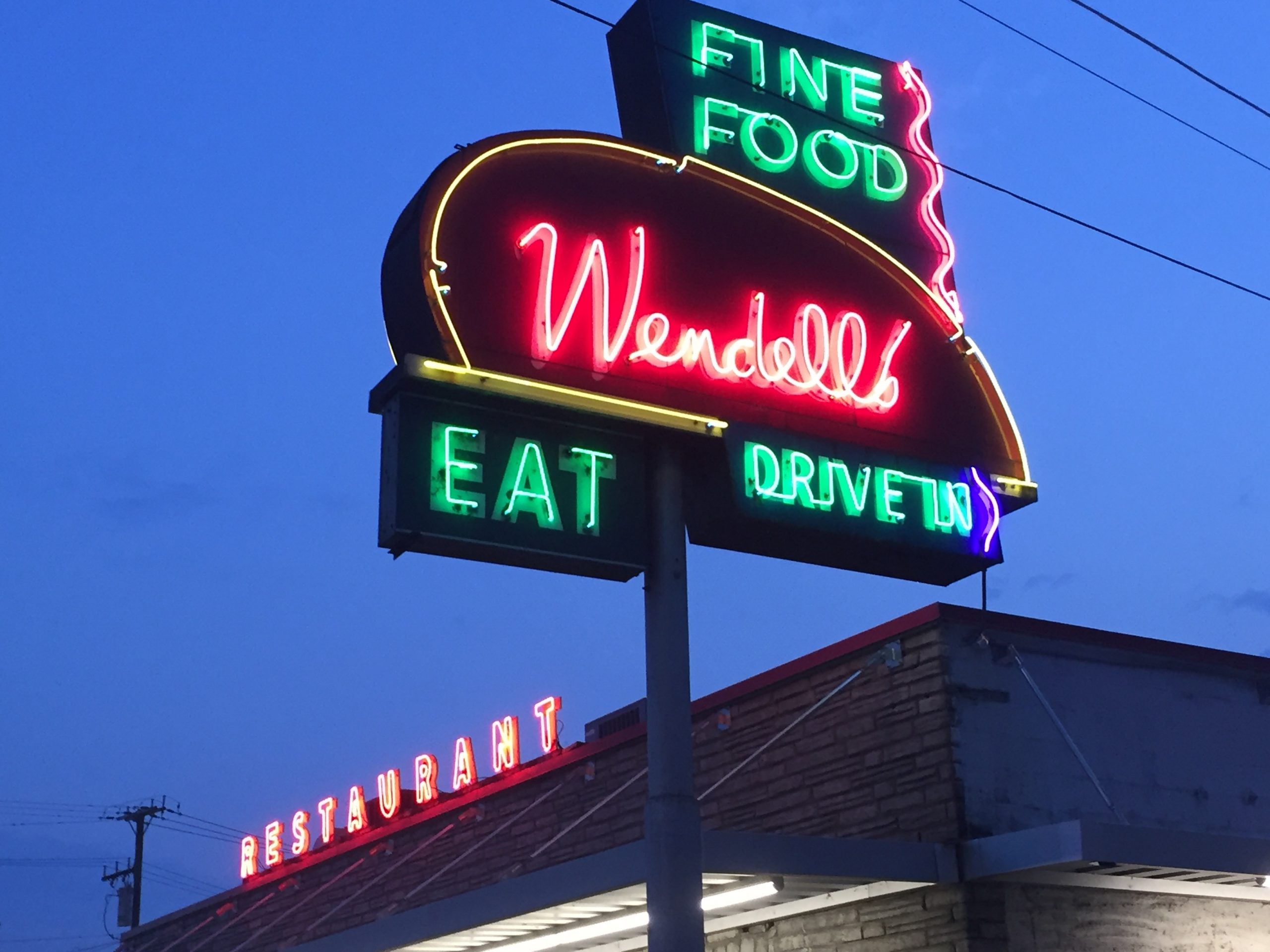
It was on one of my family’s trips to Florida, or rather on the way back, that I asked my father how neon signs worked. There was an old restaurant somewhere along the way where we always stopped and had dinner before the final stretch. The place had a large neon sign and I remembered seeing a short film on Sesame Street of a man making a neon sign, although it was mostly silent and showed the process without actually explaining anything. My father told me the glass tubing was filled with one of the noble gases, usually neon, and electricity made the gas glow. Now that was really cool—simple but cool, and was pretty much my understanding for a long time until I read Sam Kean’s The Disappearing Spoon and got a slightly more detailed, but still simple, explanation of why an electric current makes the gas glow. Basically it’s this: because of the current the electrons surrounding each atom pick up extra energy and move farther away from the nucleus, but they can only hold onto it for so long. When they fall back they release the extra energy as light.
The same principle is used in fluorescent bulbs but while neon lights are cool and provide great design for places like the old Las Vegas strip or the old Picadilly Circus in London or the old Times Square in New York fluorescent bulbs just make your office even more miserable, but that’s another story.
Wikipedia goes into even more detail and the Photographic Periodic Table has cool visualizations of some of the noble gases lit up, but what I really think about is how much of an art neon signs are—a disappearing art. They’ve been mostly replaced by plastic and LED and, more recently, digital signs that are—no pun intended—flashier, and I don’t think it’s a coincidence that more modern signage is used by big chain businesses while it’s small, local places that keep their own neon signs. And maybe at one time that was economic. The big places need signs that are easy to mass-produce and neon signs mostly need to be hand-crafted. The smaller places couldn’t afford to upgrade and neon signs are durable. And what became the retro appeal didn’t hurt either. Neon is still popular for some home design and there have been efforts to preserve neon signs, but they’re gradually going from neon to neoff, and, yes, that pun was intended. Their disappearance means the loss of a personal touch, as well as some of the local color. Neon does a lot more than just illuminate the night.






You have the most illuminating blog, Chris, and I’m lighting up with gratitude after reading this post.
Your comments are often illuminating for me too because sometimes I forget what I wrote until you comment and that just lights up my memory.